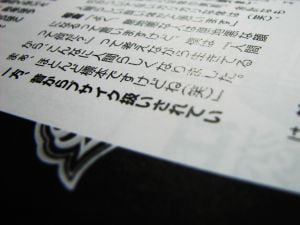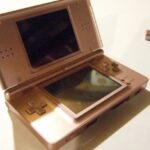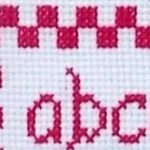The Japanese language is classified as a level 4 language, which means to us English, that it is one of the hardest to learn. In reality, it is really the grammar that tends to throw English speakers off and not the language itself. Many Japanese language students will admit that the Japanese alphabet known as hiragana, katakana, and kanji, is actually not as hard to learn as you would imagine. In fact, a typical Japanese language learner can learn all of the hiragana characters within a matter of two week at a level where reading is feasible. That just leave katakana and kanji. Katakana can be learned in the same amount of time as hiragana; however, kanji will take quite a while. Even native Japanese speakers have trouble learning all of them. But the Japanese writing system isn’t my topic at this point. Instead, I am going to introduce you to the three most basic, and very useful structures of Japanese grammar. These three structures will help you to gain a foundation for further study.
The first structure is the affirmative sentence. The affirmative sentence follows the structure: NOUN 1 (PARTICLE) NOUN 2 (DESU)
Desu is a Japanese copula and is used to mean “to be” (is, am, are, etc…)
The particle placed between noun 1 and noun 2 is “wa.”
For example: Watashi wa Susume desu.
This translates to “I am Susume.” (Susume is a Japanese name).
Rule of thumb:
1. Desu always comes at the end of a sentence.
2. “Wa” is a subject marker. We always use “wa” to mark the subject of the sentence. In the case of the example, “Watashi” (I) am the subject, and thus “wa” follows “watashi.”
3. There are no articles such as “a” and “the” in Japanese, so don’t worry about them.
Let’s look at another example:
Watashi wa gakusei desu.
This translates to “I am a student.” (Gakusei is the Japanese word for student).
Ichigo-san wa sensei desu.
This translates to “Mr. Ichigo is a teacher.” (Sensei is the Japanese word for teacher)
Cultural note:
1. “san” is used after a name that is not your own for respect. Literally it means Sir or Ma’am. So if I want to say John Smith, in Japanese I would only use his last name and say Smith-san or Simisu-san as it would be spelled and pronounced in Japanese.
The second sentence for is the negative sentence.
The structure for this sentence is exactly the same as the affirmative sentence; however, you change “desu” to “dewa arimasen” or “ja arimasen.” Both dewa arimasen and ja arimasen are the negative forms of “to be.” (is not, am not, are not, etc…)
Cultural note:
2. The Japanese have respectful terms and casual terms. The term “dewa arimasen” is more respectful and you’d use it when speaking to a teacher, parents, and the like. “ja arimasen” is more casual, and you can use it with friends, peer, and the like.
Let’s look at an example:
Remember:
Watashi = I
Gakusei = student
Wa = Subject marker (particle)
Watashi wa gakusei dewa arimasen.
Watashi wa gakusei ja arimasen.
I am not a student.
Ichigo-san wa sensei dewa arimasen.
Ichigo-san wa sensei ja arimasen.
Ichigo is not a teacher.
Substitute other Japanese vocabulary to make different sentences in the affirmative and negative.
Forming a simple question:
Yes and no questions are extremely easy to form in Japanese, especially if you have mastered the affirmative and negative sentence formations. A question is formed by adding the word “ka” to the end of the sentence.
Tetsu-san wa gakusei desu.
Tetsu is a student.
Tetsu-san wa gakusei desu ka.
Is Tetsu a student?
By simply adding “ka” you change the sentence from a statement to a question.
Let’s try another.
Seya-san wa kaishain. (Kaishain is the Japanese word for company employee.)
Seya is a company employee.
Seya-san wa kaishain desu ka.
Is Seya a company employee?
To answer in the affirmative to either of these questions, we simply say “hai” meaning yes. Then repeat the noun follow it with “desu.”
Q: Seya-san wa kaishain desu ka. (Is Seya a company employee?)
A: Hai, kaishain desu. (Yes, she is a company employee.)
Or…
A. Hai, Seya-san wa kaishain desu.
Grammar note:
1. You can omit the “watashi wa” part if you like. It’s just a means of answering with a complete sentence. However, just like in English, it isn’t necessary.
2. “Ka” is like the question mark in an English sentence. Therefore, there is no need to write a question mark.
Answering in the negative
The word “iie” means no. Use it like “hai” and change your answer to the negative by changing the “desu” to “dewa arimasen.”
Q: Seya-san wa kaishain desu ka.
A: Iie, Seya-san wa kaishain dewa arimasen.
Or…
A: Iie chigaimasu. (The term “chigaimasu” mean something to the like of “it isn’t true” or “its not correct.”)
Grammar note:
3. “Chigaimasu” is commonly used to deny the truth in something. Practice this and use it often.




